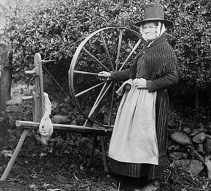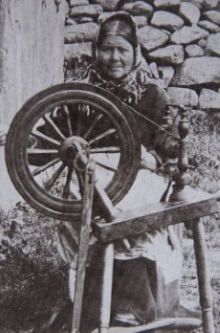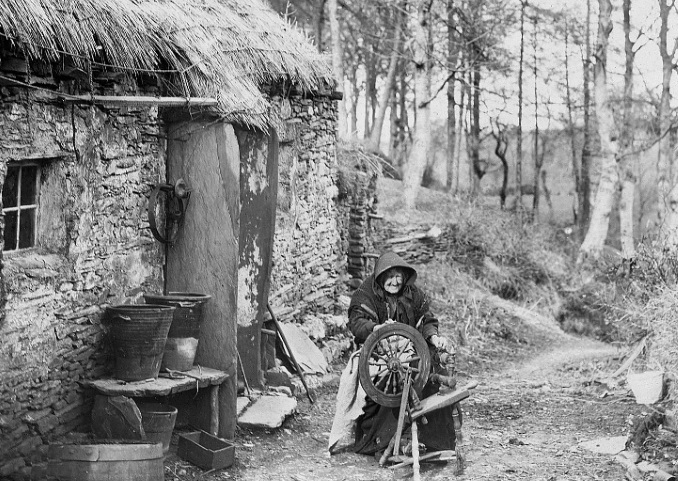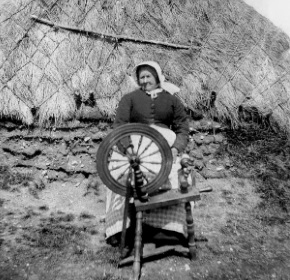Celtic Women and Spinning Wheels
Images of lone Celtic spinners, sitting at spinning wheels at the doors of thatched cottages. They are evocative of times gone by, but not really so long ago. Failing eyes getting out of the smoky, indoor darkness to obtain the benefit of daylight. What the eyes can no longer focus on, compensated for by years of experience in the craft and knowledge of the machine.

The spinning wheel, so important in the Celtic home in years gone by. For hundreds of years spinning held a central place in the lives of the croft and the spinning wheel was a proud possession. Folk museums all around the Celtic world seem to have collections of these images. Faded black and white photographs of, usually older, women with a look of pride as they undertook their work.
Fibres have played a crucial part in human life from prehistory and the skill to spin thread and weave into cloth has developed over many centuries.
The Irish Guild of Weavers, Spinners, and Dyers write:

"The earliest known evidence in Ireland of woven material dates from about 1600 B.C., as pottery from that period shows signs of woven material in which the clay was placed before firing. A fragment of cloth in the National Museum, found in a bog in County Antrim, is dated from at least 700 B.C."
"Stone spinning whorls have been recovered from many excavations such as crannogs or lake dwellings of the first and second centuries B.C., although we know that spinning was certainly practised in Ireland in Neolithic times. Fragments of woven fabric and weaving tools have been found in the excavations of Viking and Medieval Dublin."
It was not easy work with wool having to be cleaned when sheared from the sheep, carded in order to separate the fibres and spun into yarn. The weaving often then being undertaken at home to supply own, family or neighbours’ needs, but also the yarn being supplied to the weaver to gain income and be made into cloth for various items that were sold.
However, as technology changed and the level of demand grew the supply coming from the domestic spinners and weavers was simply not enough. Although a number of other political and social factors also added to the decline in the domestic spinner. There were regional variations, with remote areas holding longer to the tradition and there are also those who continue to work in this small scale way today. Nevertheless, the numbers fell, leaving just the image, for some reason a very powerful and wistful one, of the lone spinner at the door of the Celtic thatched cottage. Remembered not only from museum archives, but in folklore and song, with spinning wheels an object commonly associated with Celtic fairy tales.
- Pan-Celtic
- English








